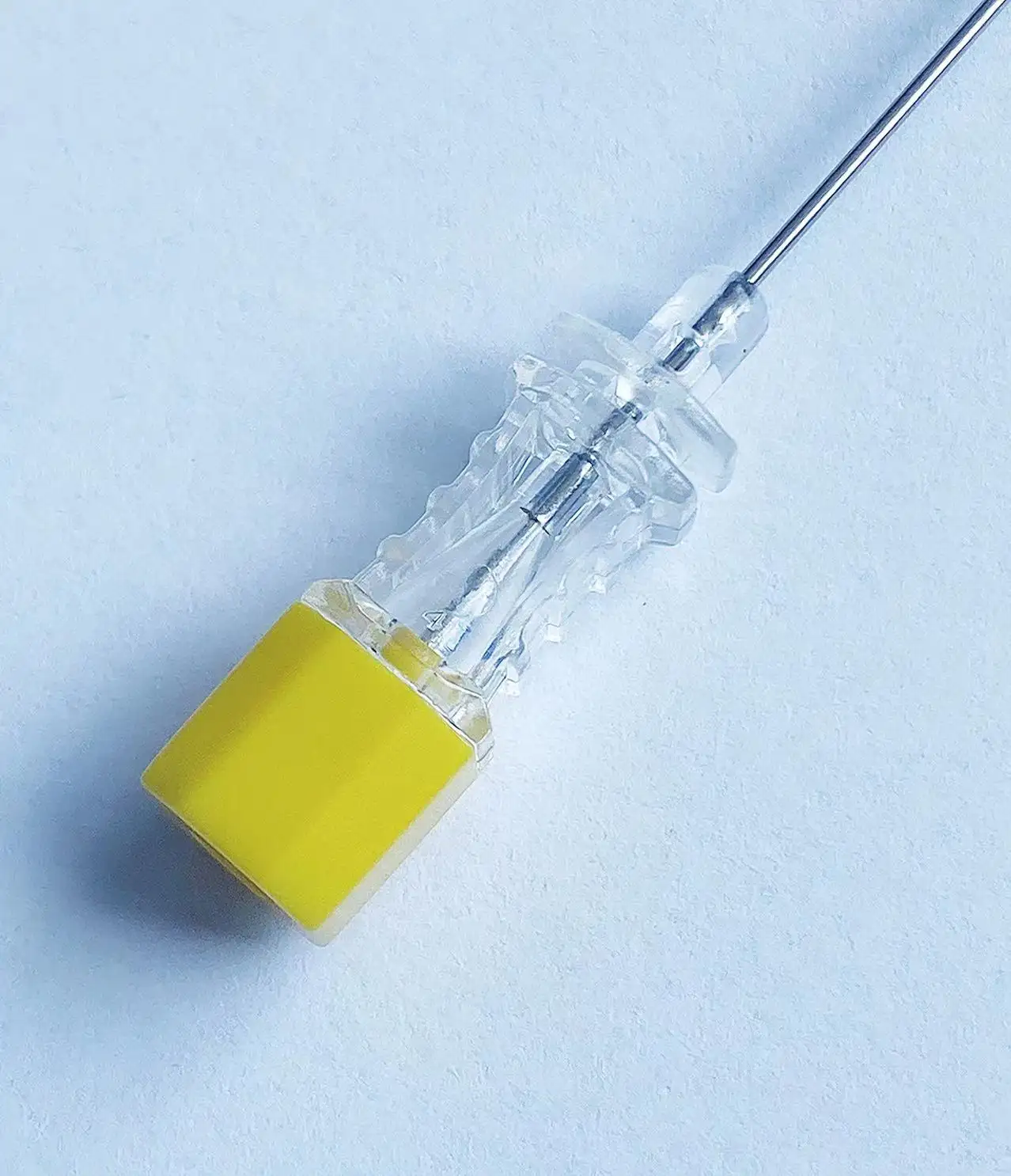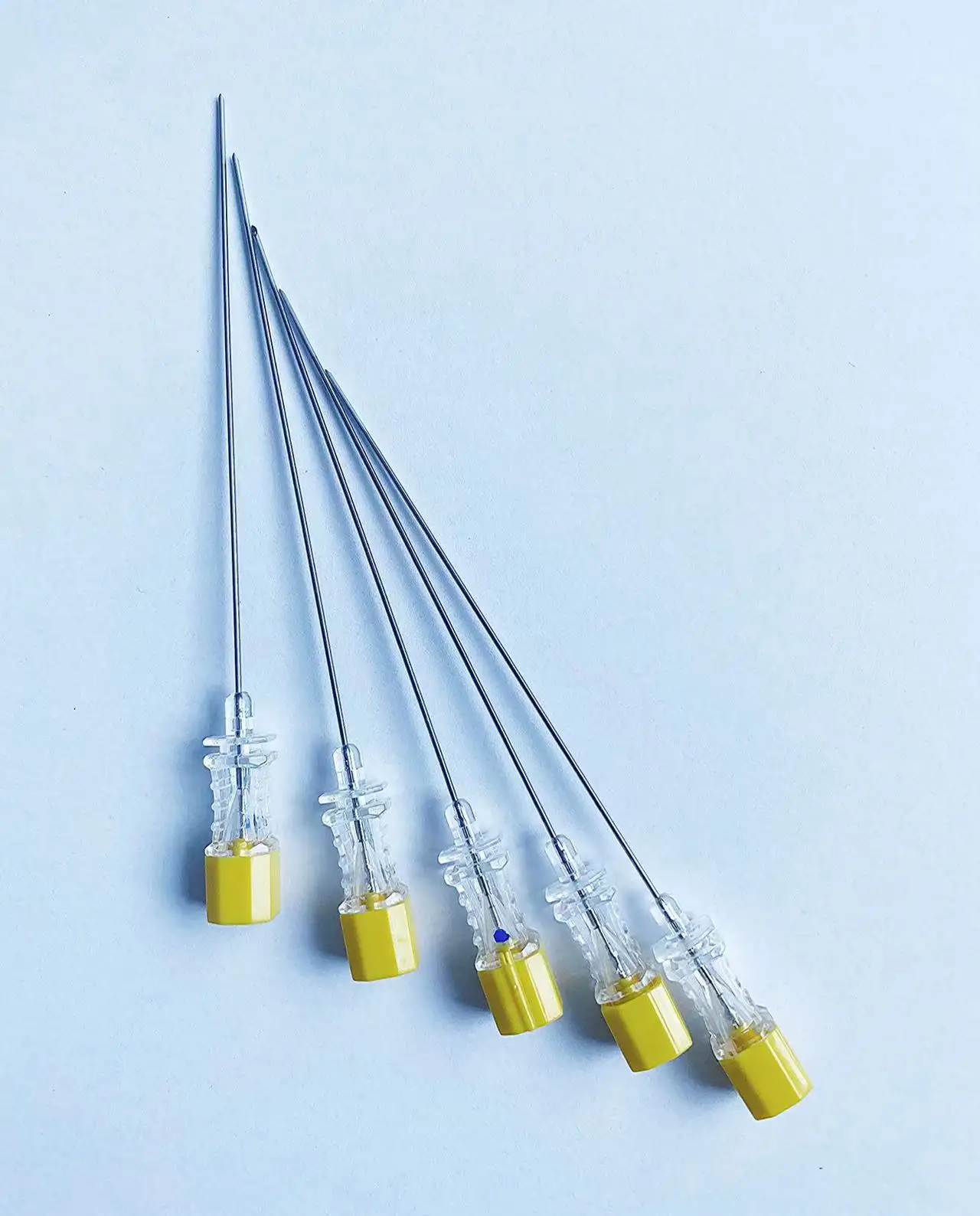The Importance of Choosing the Right Epidural Needle
In modern medicine, especially in the field of anesthesia, precision and safety are of the utmost importance. An Epidural Needle is one of the most critical tools in procedures designed to provide effective pain relief for patients. Its design, quality, and suitability for specific clinical needs can directly impact both patient comfort and procedural outcomes. Selecting the right Epidural Needle is not simply a matter of preference but a professional responsibility that ensures consistent results, minimizes complications, and enhances trust between patients and healthcare providers.
Understanding Epidural Needles
Structure and Functional Features
An Epidural Needle is not a standard medical needle. It is specifically designed to reach the epidural space with accuracy and minimal risk. The Tuohy bevel at the tip provides a curved edge that guides the catheter without penetrating too deeply. Depth markings along the shaft allow clinicians to monitor insertion length with precision. A hollow channel permits the introduction of anesthetics or catheters. Each feature of the Epidural Needle is carefully engineered to maximize control, reduce tissue trauma, and ensure safe drug administration.
Why Design Matters in Clinical Practice
The design of an Epidural Needle has a direct influence on clinical outcomes. A poorly designed needle can increase the risk of accidental dural puncture, patient discomfort, or incomplete anesthesia. On the other hand, a well-designed Epidural Needle ensures smooth insertion, accurate placement, and minimal complications. When clinicians can rely on their tools, the overall efficiency of the procedure improves, patient anxiety decreases, and healthcare providers can focus more fully on patient care rather than technical challenges.
Factors to Consider When Selecting an Epidural Needle
Material Quality and Durability
The material used in manufacturing an Epidural Needle determines its strength, sharpness, and resistance to bending. High-quality stainless steel is often preferred for its durability and sterility. A needle that maintains its sharpness ensures cleaner entry into tissue, minimizing trauma and discomfort. Choosing an Epidural Needle from trusted manufacturers also reduces the risk of breakage or irregular performance, both of which can compromise safety.
Size and Gauge Options
Epidural Needles come in different sizes and gauges to suit various clinical scenarios. A thinner gauge may be used for delicate patients, while thicker gauges may be required in more complex procedures. The choice of size affects both ease of insertion and the type of catheter that can be introduced. Clinicians must consider patient anatomy, procedure type, and medication requirements when choosing the appropriate Epidural Needle size.
How to Ensure Precision with an Epidural Needle
The Role of Depth Markings and Indicators
Accurate placement of the Epidural Needle is essential to the success of the procedure. Depth markings along the shaft give clinicians a clear reference point as they insert the needle. These indicators reduce guesswork and allow for more precise insertion into the epidural space. Precision at this stage ensures effective pain relief and reduces the need for repeated attempts, which can increase risk.
Ergonomic Handling for Clinicians
Beyond patient comfort, the design of an Epidural Needle also impacts the ease with which clinicians can handle it. An ergonomic grip ensures stability during insertion, allowing steady progress without unnecessary movement. This stability reduces the likelihood of misplacement and enhances clinician confidence. A well-designed Epidural Needle becomes an extension of the practitioner’s skill, enabling safer and more efficient procedures.

Advantages of Using the Right Epidural Needle
Improved Patient Comfort and Satisfaction
Patients undergoing procedures with a well-selected Epidural Needle typically experience less discomfort. A smoother insertion process reduces anxiety and pain during the procedure, making the overall experience more tolerable. When patients feel cared for and respected, satisfaction levels rise, and trust in medical providers grows stronger. This outcome is beneficial not only for the patient but also for the healthcare institution’s reputation.
Reduced Risk of Complications
Complications such as spinal headaches, infection, or nerve irritation can occur when epidural procedures are not performed with the right tools. Using the correct Epidural Needle helps reduce these risks significantly. A proper bevel, reliable material strength, and precise depth control all contribute to minimizing adverse effects. When risk is reduced, recovery is smoother, and patient safety is better protected.
Challenges in Selecting an Epidural Needle
Variability in Patient Anatomy
Not every patient presents the same anatomical challenges. Factors such as body weight, spinal abnormalities, or previous surgeries can complicate the use of an Epidural Needle. Clinicians must be prepared to select different needle types or sizes to accommodate these variations. This flexibility highlights why having a range of high-quality needles available is critical for modern healthcare facilities.
Balancing Cost and Quality
While it may be tempting to select less expensive options, the quality of an Epidural Needle should never be compromised. Inferior products may bend, dull, or fail under pressure, putting patient safety at risk. Balancing cost considerations with the need for reliable performance is a challenge, but prioritizing safety and effectiveness always leads to better long-term outcomes. Hospitals and clinics must view needle selection as an investment in patient care rather than just an expense.
Innovations in Epidural Needle Technology
Safety-Enhanced Designs
Modern Epidural Needles increasingly incorporate advanced features to improve safety. For example, smoother bevels reduce tissue damage, while reinforced shafts prevent bending. Some designs offer visual or tactile feedback to confirm correct placement. These innovations reduce complications and increase clinician confidence, making the procedure safer for patients in diverse clinical settings.
Integration with Imaging Techniques
The future of epidural procedures involves combining the Epidural Needle with imaging technologies such as ultrasound guidance. Depth markings and enhanced visibility features make it easier to track needle progress in real time. This integration allows clinicians to see exactly where the needle is, further reducing risks and improving accuracy. As technology continues to advance, the role of the Epidural Needle in anesthesia becomes even more precise and reliable.
The Role of Epidural Needles in Pain Management Strategies
Applications in Surgical Procedures
In surgeries involving the abdomen, pelvis, or lower limbs, the Epidural Needle allows clinicians to provide targeted anesthesia without resorting to general anesthesia. Patients remain conscious but comfortable, and recovery is often quicker. The reliability of the Epidural Needle in these contexts underscores its importance in surgical practice and its role in reducing patient risk.
Use in Labor and Chronic Pain Management
During labor, the Epidural Needle is a crucial tool for delivering pain relief that allows mothers to stay awake and engaged during childbirth. In cases of chronic pain, epidural injections administered via a needle can offer long-term relief for conditions such as back pain or cancer-related pain. By enabling direct delivery of medication to the source of pain, the Epidural Needle becomes central to comprehensive pain management strategies.
FAQ
What factors should be considered when selecting an Epidural Needle
Clinicians should consider the needle’s material, size, gauge, and design features such as bevel shape and depth markings. These factors ensure safety, precision, and patient comfort.
How does an Epidural Needle improve safety during anesthesia
An Epidural Needle is designed to minimize risks by offering accurate placement, smooth insertion, and compatibility with catheters. These features reduce complications such as dural puncture or nerve irritation.
Can all needles be used for epidural anesthesia
No, only specifically designed Epidural Needles should be used. Standard medical needles do not have the required features to safely access the epidural space and may increase risks.
Are there new technologies improving Epidural Needle performance
Yes, modern innovations include reinforced shafts, ergonomic grips, and compatibility with imaging tools such as ultrasound. These advancements improve accuracy and enhance both patient and clinician safety.
Table of Contents
- The Importance of Choosing the Right Epidural Needle
- Understanding Epidural Needles
- Factors to Consider When Selecting an Epidural Needle
- How to Ensure Precision with an Epidural Needle
- Advantages of Using the Right Epidural Needle
- Challenges in Selecting an Epidural Needle
- Innovations in Epidural Needle Technology
- The Role of Epidural Needles in Pain Management Strategies
- FAQ

